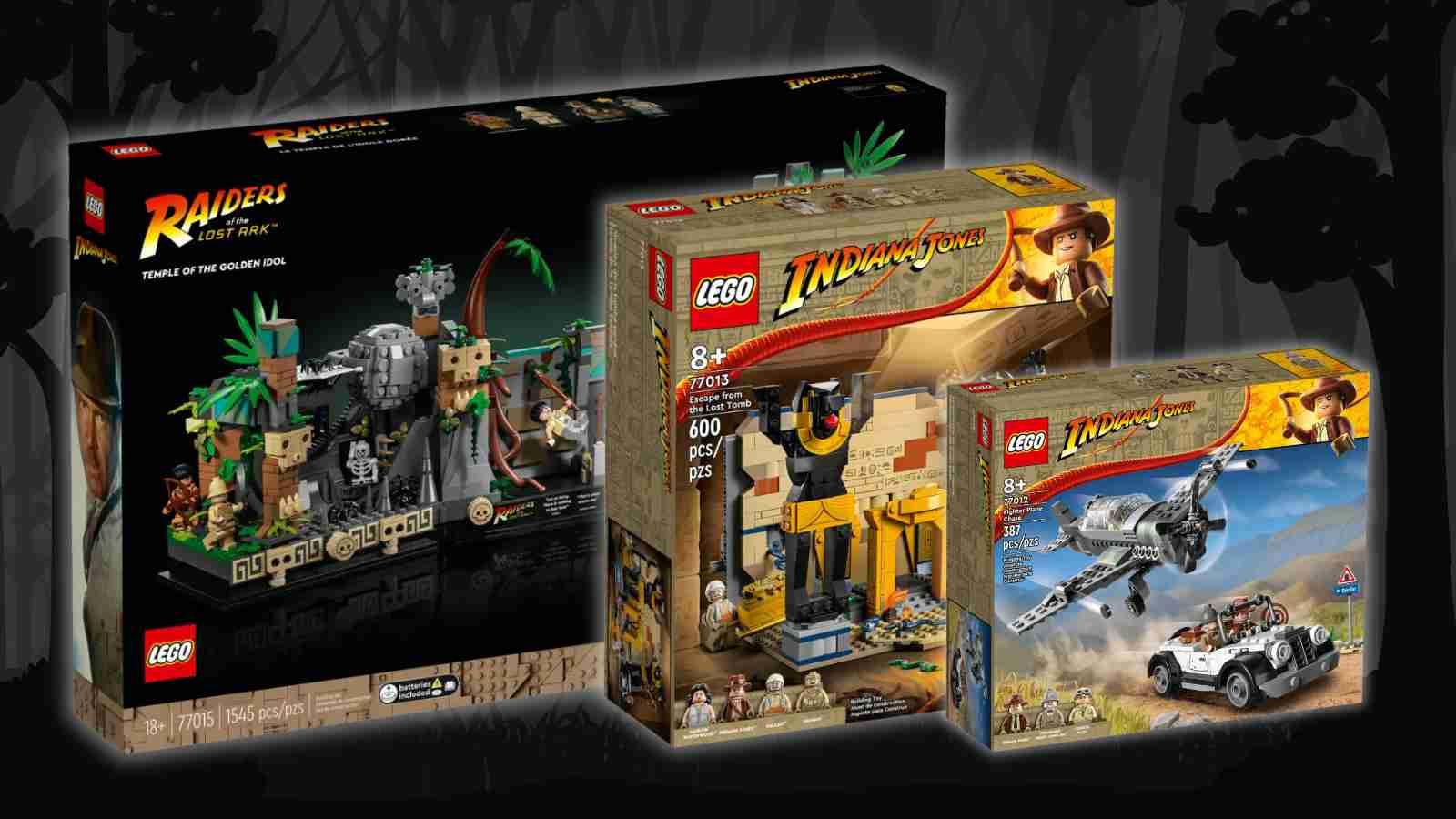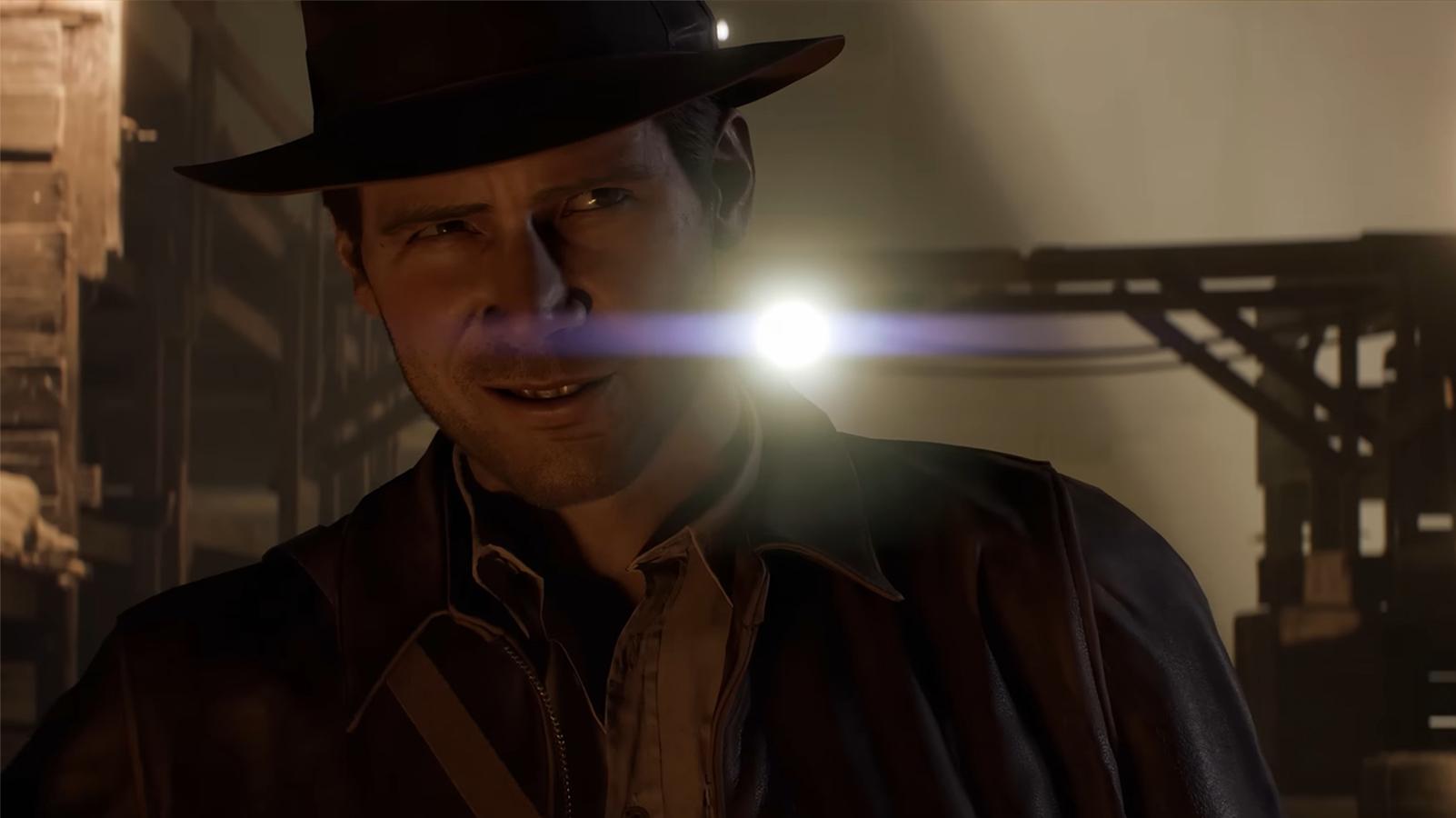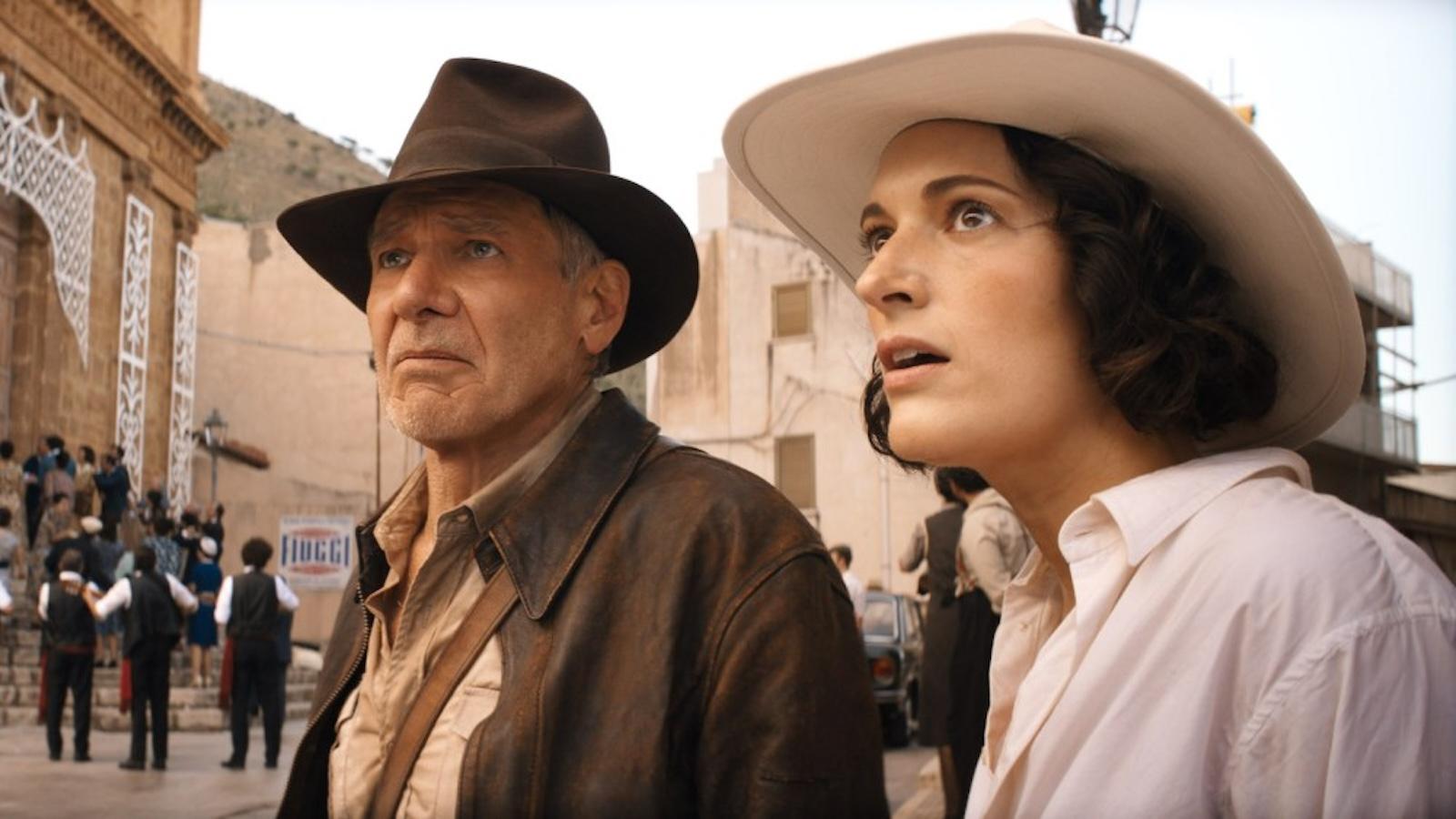Indiana Jones 5 review: Harrison Ford’s iconic hero tries to turn back the clock
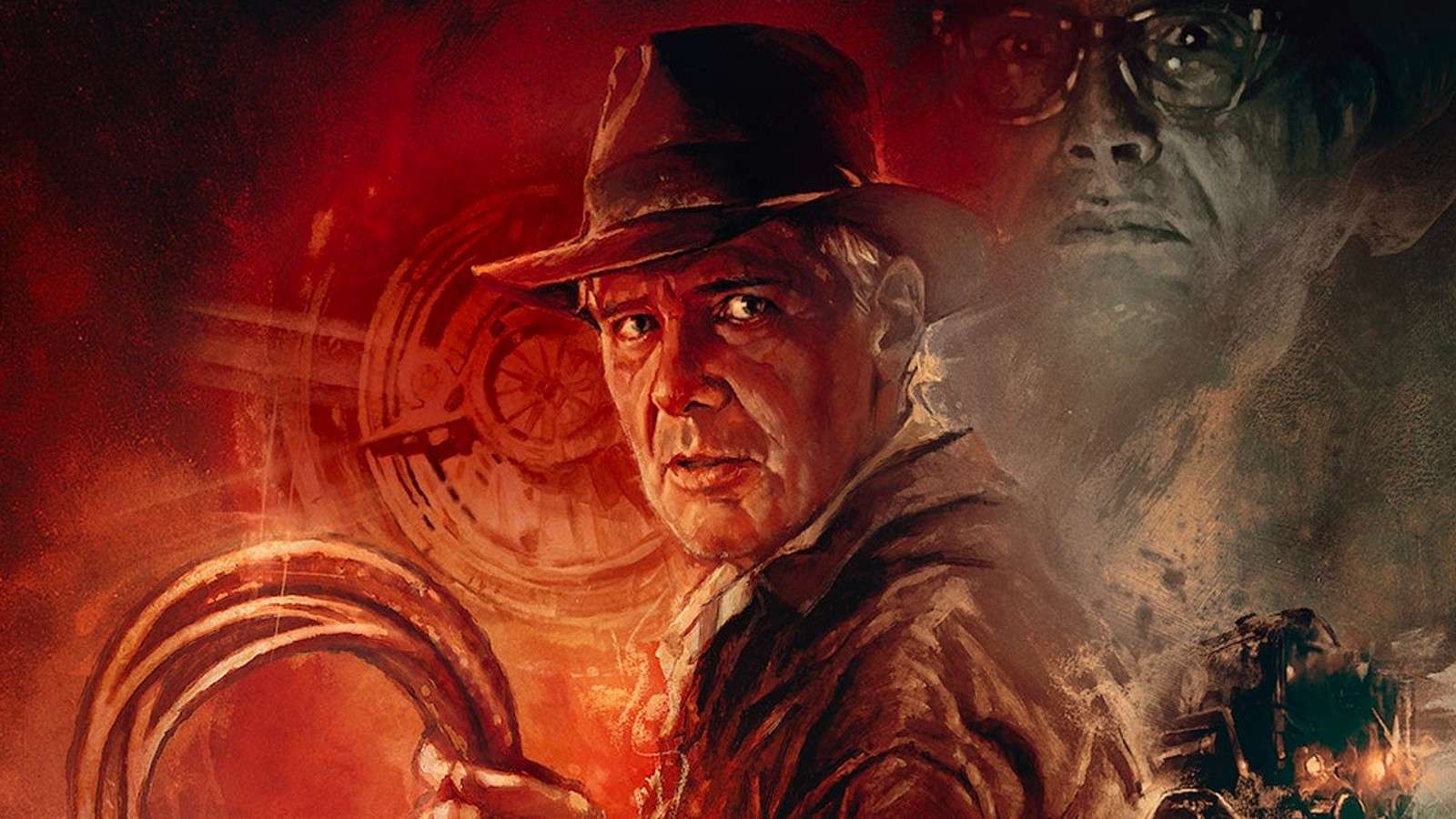 Lucasfilm
LucasfilmHarrison Ford is back foiling Nazis and tracking down lost ancient artifacts in Indiana Jones and the Dial of Destiny, 15 years since his last outing as cinema’s favorite tomb raider. But should he have hung up his fedora and whip long before this latest crusade?
Nostalgia ain’t what it used to be. Every franchise out there is looking to reboot, remake or rebuild itself with cutting-edge technology to produce an ever-churning, past-meets-present tense. For many, George Lucas and Steven Spielberg’s 1980s Indiana Jones adventure trilogy, starring Harrison Ford’s roguish, whip-wielding, thrill-seeking archaeologist, were classics of their time (albeit often problematic by today’s standards): indebted to 1930s B-movie serials but delivered with a knowing wink, peerless practical stunts and non-stop adrenaline rushes that practically invented the modern Hollywood action movie.
The first attempt to rejuvenate the series with 2008’s Indiana Jones and the Kingdom of the Crystal Skull was much maligned (when “nuking the fridge” replaces “jumping the shark” as shorthand for creative exhaustion, it’s not a good look).
So, there’s understandable trepidation about yet another try with a now eighty-year-old star and without the genius director who set it all up. Shouldn’t all concerned follow Henry Jones Sr.’s (Sean Connery) sage advice at the end of the original trilogy to, “Let it go, Indiana”? After all, that film was called The Last Crusade. The clue was in the title, guys.
Dial of Destiny wants to be brand-new and retro
Indiana Jones and the Dial of Destiny tries hard to have it both ways. On one hand, it wants to position its ageing hero as a man out of, and running out of, time. On introducing Jones in the movie’s present-day of 1969, the US is celebrating the Moon Landings and he’s rudely awakened by beatnik neighbours blasting out The Beatles’ ‘Magical Mystery Tour’. He’s lost his son to Vietnam, his wife Marion to divorce and his mojo.
So, when his vivacious goddaughter Helena Shaw (Phoebe Waller-Bridge) suddenly appears, with a quest to track down Archimedes’ Antithykera, a dial-like gizmo split in two that can allegedly find “fissures in time” – think Back to the Future’s Flux Capacitor for Classics scholars – Indy is reluctantly back on the beat in a brand-new future.
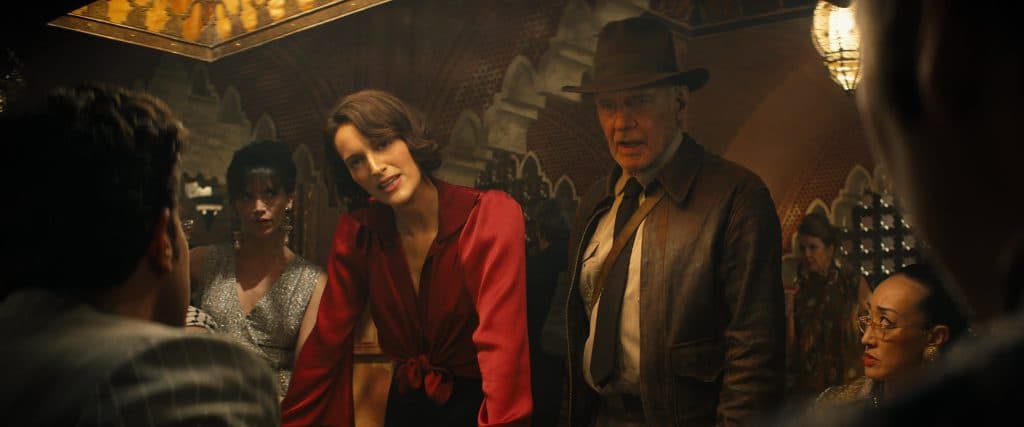 Lucasfilm
LucasfilmBut – we’ve already been re-introduced to Indy in the film’s prologue, set at the end of World War Two. Here, he and his archaeologist accomplice Basil Shaw (Toby Jones), Helena’s father, are trying to liberate stolen artefacts from the Nazis. Ford has been digitally de-aged to restore him to his Raiders pomp and, though the VFX are a vast step up on, say, Martin Scorsese’s The Irishman from just four years back, in certain angles and movements, this virtually improved Ford avatar still has one foot in the Uncanny Valley. It’s disconcerting.
Haven’t we been here before?
Moreover, because this sequence is our reintroduction to the character, who’s once again shooting and chasing and riding motorbikes after German soldiers, it feels too much like a video game inspired by the original films. The relic Jones and Shaw are after turns out to be a fake, a copy. And sadly, so too do many of the action set-pieces and story beats here.
There’s another North African narrow street pursuit; another nightclub skirmish in which everyone’s trying to grab the same artefact; yet another subterranean booby-trapped lair. Director James Mangold (Logan, Ford Vs. Ferrari) is a fine director but he doesn’t have the fluidity and elegance that makes Spielberg’s work seem so effortless. The action scenes are dutiful and competent, and John Williams’ rousing score does a huge amount of the heavy lifting, but they lack real spark or excitement. There’s nothing here as ingenious or flat out fun as shooting the bazaar swordsman in Raiders or Temple of Doom’s minecar chase or the River Phoenix young Indy prologue in Last Crusade: the flashes of inspiration that made Indiana Jones movies so much fun.
There’s also a real issue with some of the characters. Waller-Bridge is a generational talent, but Helena cockiness and incessant smart-arse patter is a lot less charming than she believes. Her Moroccan kid-thief sidekick Teddy (Ethan Isidore) is no Short Round from Temple of Doom. An A-list co-star pops up for a thankless cameo and the bad guys are just bland. Mads Mikkelsen’s mad scientist is disappointingly one-note, and after Cate Blanchett’s lackluster Russian nemesis in Crystal Skull, it’s sad to admit that the later Indiana Jones films could take lessons from Marvel in giving great actors like Mikkelsen (Doctor Strange) and Blanchett (Thor Ragnarok) more memorable villains to play.
Harrison Ford to the rescue
Thankfully, when all else fails, Ford doesn’t. There’s a real irony and poignancy in Indy’s quest to rewind the clock to find this Dial of Destiny and Ford’s grizzled charm, and genuine affection for his character shines through in every scene. He’s also in incredible shape for his age and though he’s running and jumping around less than in previous instalments (at times he’s almost Waller-Bridge’s sidekick), you totally believe that Indy can still duck and dive with the best of them. As Indy himself once growled, “it’s not the years, honey, it’s the mileage.”
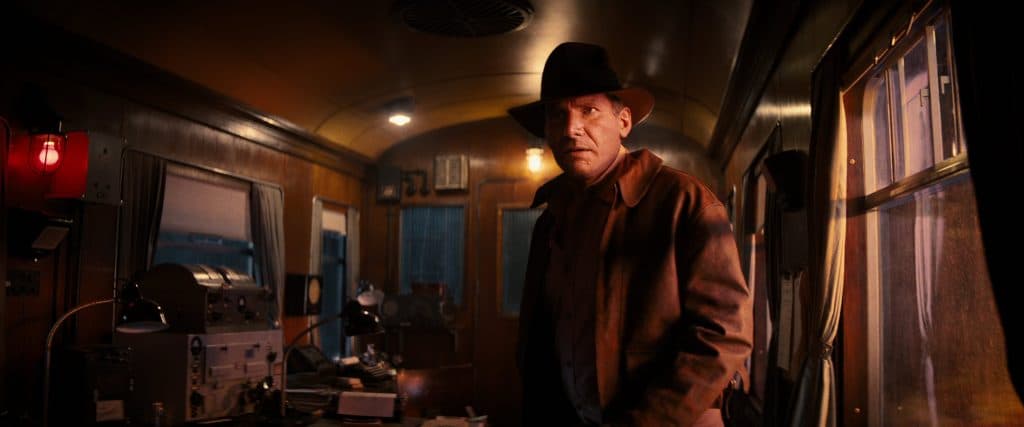 Lucasfilm
LucasfilmThen there’s the grandstanding, go-for-broke final act. Without giving any specific spoilers it’s maybe the first time in the whole movie where the story aims for something completely new. It’s a jump that some audiences will hate in the way the Crystal Skull aliens took many people out of that film, and the Indiana Jones world in general – which is strange for a series that had already unleashed the wrath of God, magical stones, and an immortal knight.
For this reviewer, the film’s climax felt original, daring and, ultimately, hugely moving: given the Archimedes theme, it’s a real “Eureka!” moment. For all Dial of Destiny’s flaws, and whether Disney attempts to continue the series with Helena taking on the mantle, this feels like a fitting end (and please, let it be the end this time) to one of the most iconic characters in modern movies and the star who brought him to life.
Indiana Jones and the Dial of Destiny review score: 3/5
The fifth film in a veteran franchise is too often content to riff on former glories that mainly remind you how glorious the older films were. But a wild ending that allows Harrison Ford to go out in style just about makes Dial of Destiny worth tuning in for.
For more Indiana Jones and the Dial of Destiny info, check out the below articles:
Indiana Jones 5 review | Cast and characters | What is the Dial of Destiny? | Number of Indy movies | Helena Shaw explained | Soundtrack and songs | Indiana Jones streaming details | Dial of Destiny runtime | Lance of Longinus explained | Where is Indy’s son? | Filming locations | How to watch the Indy movies in order | Is Short Round in Dial of Destiny? | Ranking the Indiana Jones movies | Villain explained | Does Dial of Destiny have a post-credits scene? | Best Easter Eggs | Ending explained | Deaths in Dial of Destiny? | Will there be an Indiana Jones 6?
